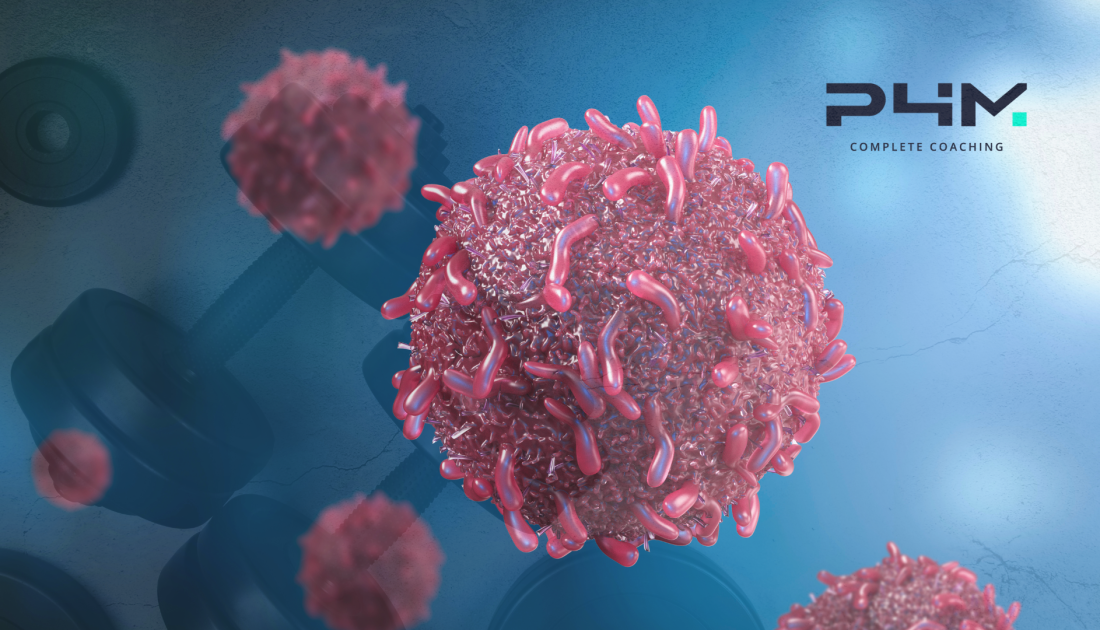Half of Us Will Face Cancer… Why Strength Training Could Literally Save Your Life!
Cancer is a reality that affects millions, and in the UK, the statistics are staggering — approximately 1 in 2 people will develop some form of cancer during their lifetime. Each year, around 393,000 people are diagnosed with cancer, averaging more than 1,000 diagnoses daily. However, around 4 in 10 UK cancer cases every year could be prevented through lifestyle changes, including regular exercise.
Imagine your body as a fortress, with your muscles acting as its walls and defenses. A well-maintained stronghold can withstand attacks, while a weak one crumbles under pressure. Strength training fortifies your body against illness, helping to protect against cancer and aiding recovery. While medical advancements continue to improve treatment options, one often overlooked factor in both prevention and recovery is strength training.
When we think about cancer treatment and prevention, our minds often go to medical advancements, nutrition, and lifestyle changes. However, one crucial and often overlooked factor is strength training. According to Dr. Joseph Zundell, a cancer biologist, maintaining muscle mass through resistance training can significantly impact survival outcomes, immune function, and overall resilience during treatment.
Strength Training: A Shield in Cancer Treatment
A strong muscle reserve is not just about aesthetics; it can literally improve survival outcomes for cancer patients undergoing treatment. Think of muscle as a financial reserve — when times get tough, having savings to fall back on is essential. Similarly, when battling cancer, having muscle mass can help withstand the physical toll of treatments like chemotherapy and radiation. Cancer treatment often leads to cachexia, a severe muscle-wasting condition. Strength training can help slow this process, preserving muscle mass and improving quality of life (pmc.ncbi.nlm.nih.gov).
Strength Training as an Immune System Booster
Your immune system is like a well-trained army, constantly on guard against infections and diseases. Exercise, particularly strength training, acts as a general that mobilizes this army, ensuring that immune cells move throughout the body efficiently. This process aids in infection prevention, wound healing, and even reducing cancer risks. Given that cancer patients are often immunocompromised, resistance training can be a vital tool in maintaining overall health (cancer.org).
Building a Strong Foundation: Muscle and Bone Density
Think of your bones and muscles as the foundations of a building — when the foundation is strong, the entire structure remains stable. Cancer treatments such as chemotherapy and hormonal therapy can weaken bones and muscles, making daily activities challenging. Strength training counteracts these effects by promoting bone remodeling and muscle preservation. Studies show that resistance training supports bone density, reducing the risk of osteoporosis and fractures in cancer patients (ijbnpa.biomedcentral.com).
Metabolic Health: Keeping the Engine Running Smoothly
Your metabolism is like the engine of a high-performance car — when finely tuned, it runs efficiently, but when neglected, it sputters and breaks down. Hyper-caloric diets and excessive body fat increase cancer risks by destabilizing metabolism and hormonal balance. Resistance training improves insulin sensitivity, regulates hormone levels, and reduces inflammation, all of which contribute to a healthier metabolic state. By maintaining a leaner body composition, individuals can lower their risk of cancer and improve their overall well-being (academic.oup.com).
Managing Side Effects: Strength as a Lifeline
Cancer treatments can feel like a storm battering your body. Strength training is the anchor that helps manage treatment-related side effects such as fatigue and decreased physical function. A study highlighted by the National Foundation for Cancer Research found that strength training just twice a week reduced the likelihood of dying from cancer by 31% (nfcr.org).
Separating Fact from Fiction: Strength Over Myths
There is a lot of misinformation surrounding cancer treatments, with some believing in miracle cures. However, as Dr. Zundell states, every cancer behaves differently, and no single approach works for all. Instead of chasing myths, focusing on evidence-based strategies such as exercise, quality sleep, minimizing alcohol consumption, and avoiding smoking is essential. Strength training plays a pivotal role in this equation, ensuring that individuals remain strong, resilient, and metabolically healthy (academic.oup.com).
Final Thoughts: Lifting More Than Just Weights
Strength training is not just about lifting weights — it’s about lifting your quality of life, resilience, and longevity. Whether you’re looking to reduce your cancer risk, support a loved one through treatment, or enhance your own well-being, resistance training should be a foundational part of your routine. Like reinforcing a fortress, strengthening your body makes it better prepared to withstand any battle, including the fight against cancer.
References
- Impact of Strength Training on Cancer Patients – pmc.ncbi.nlm.nih.gov
- Exercise and Immune Function in Cancer Patients – cancer.org
- Bone Density and Strength Training – ijbnpa.biomedcentral.com
- Strength Training and Metabolic Health – academic.oup.com
- Strength Training and Cancer Mortality Reduction – nfcr.org
- Lifestyle Factors and Cancer Prevention – academic.oup.com




